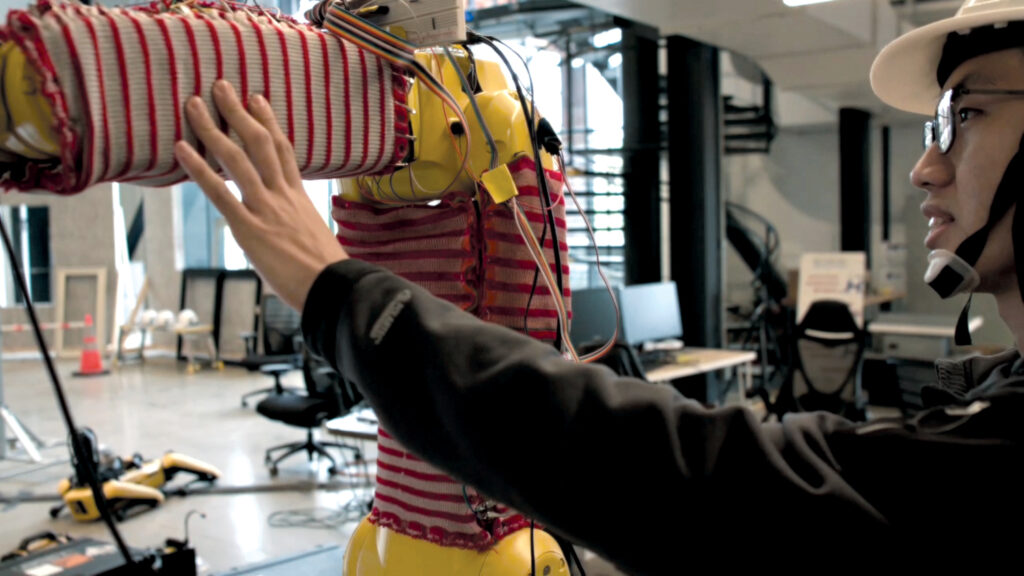
A team of researchers at Carnegie Mellon University (CMU) Robotics Institute, Pittsburgh, Pa., is working to increase employee safety with the RobotSweater, a covering for machines that detects when it encounters a human, such as a factory worker.
Developed by CMU assistant professors James McCann and Changliu Liu, the RobotSweater offers an alternative to current machine coverings, which are rigid and often fail to cover the entire robot.
“With RobotSweater, the robot’s whole body is covered, so it can detect any possible collisions,” says Liu.
Consisting of three layers of material, the sweater can sense the shape, distribution and force of contact made, using its sensors. The top and bottom layers are made of nylon yarn with stripes of metallic, conductive fiber running through them, arranged in rows on one layer and columns on the other to form a grid. Between these two layers is an insulating layer of nonconductive mesh. When pressure is applied, the rows and columns connect to one another through the holes in the mesh layer and a circuit is closed, producing an electrical signal. The sweater’s sensors then determine where pressure was applied based on where the signal originated within the grid.
The team struggled initially to connect the wiring and electronic parts to the fabric, but they were able to use snaps to their advantage, wrapping the wires around the snaps and attaching these to the ends of each stripe in the sweater.
“You need a way of attaching these things together that is strong, so it can deal with stretching but it isn’t going to destroy the yarn,” says McCann.
According to the researchers, the RobotSweater appears to be more accurate than the visual sensors most robots use now and could be used for other purposes, such as training machines to perform certain tasks by touching or guiding them.
 TEXTILES.ORG
TEXTILES.ORG


